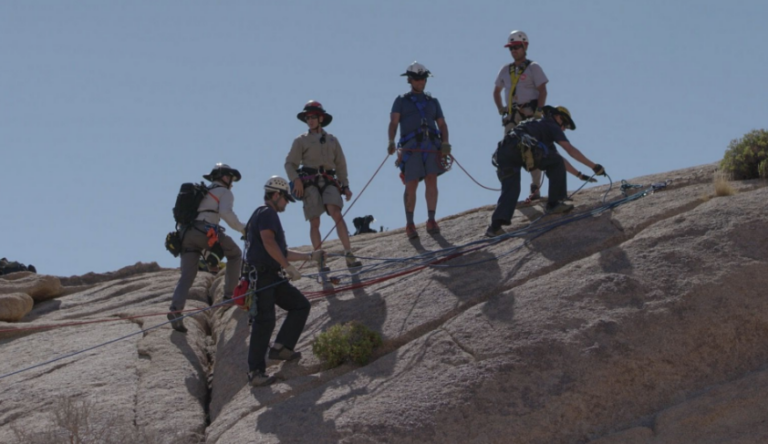There are many factors to consider when selecting equipment for rope rescue operations, including operational pre planning, hazard analysis, staffing and training. The type of rescue operation will dictate the specific equipment needs, but there are some general guidelines that can be followed.
The first step is to assess the hazards involved in the rescue operation. This will help to determine the type of equipment required and the rescue team’s capabilities. Next, the rescue team’s staffing and training must be considered. The team should have the necessary skills and experience to safely use the rope rescue equipment. Finally, the rescue operation itself must be planned. This includes creating a realistic timeline and considering all potential contingencies.
Rope rescue equipment selection is a complex process, but following these general guidelines will help ensure that the right equipment is chosen for the job.
There are many different types of rope rescue equipment available on the market. It is important to select the right type of equipment for the specific rescue operation.
The most common types of rope rescue equipment include:
- Rope: There are many different types of rope available, each with its own specific uses. The type of rope required will depend on the rescue operation.
- Anchors: Anchors are used to secure the rescue rope. The type of anchor chosen will depend on the rescue operation and the surrounding environment.
- Harnesses: Harnesses are used to protect the rescue team members from falls. The type of harness chosen will depend on the rescue operation and the surrounding environment.
- Pulleys: Pulleys are used to redirect the rescue rope. The type of pulley chosen will depend on the rescue operation and the surrounding environment.
- Carabiners: Carabiners are used to connect the rescue rope to the anchors. The type of carabiner chosen will depend on the rescue operation and the surrounding environment.
- Descenders: Descenders are used to control the rescue team’s descent. The type of descender chosen will depend on the rescue operation and the surrounding environment.
- Ascenders: Ascenders are used to ascend the rope. The type of ascender chosen will depend on the rescue operation and the surrounding environment.
- Belay devices: Belay devices are used to provide additional safety for the rescue team. The type of belay device chosen will depend on the rescue operation and the surrounding environment.
- Helmets: Helmets are used to protect the rescue team members from falls. The type of helmet chosen will depend on the rescue operation and the surrounding environment.
- Rope Grabs: Rope grabs are used to control the rescue team’s descent. The type of rope grab chosen will depend on the rescue operation and the surrounding environment.
- Litters & Patient Packaging: Litters are used to rescue victims in confined spaces, such as inside a ship or a cave network. Litters used in surface water rescue are equipped with floats.
There is a lot of equipment needed for rope rescue, and the type of equipment your organization chooses should be based on a variety of factors. Some of these factors include the types of incidents anticipated, the hazards present during a rescue, the number and qualifications of rescuers, defined standard operating procedures, and the type and frequency of training rescue personnel receive. By taking all of these factors into account, your organization can be better prepared for any rescue situation.
Organizing rescue equipment for streamlined deployment at a rescue scene is critical for efficient and effective rescue operations. Proper equipment organization can help rescue personnel quickly locate and deploy the right tools and resources for the job at hand.
There are a few key things to keep in mind when organizing rescue equipment:
- Equipment should be organized in a way that makes it easy to find and deploy.
- Equipment should be organized based on rescue personnel needs and rescue operations requirements.
- Equipment organization should be reviewed and updated regularly to ensure it remains effective.
Agencies or organizations expecting to maintain an operations or technical level response capability for rope rescue should also develop and implement a program for the section, care and maintenance of life safety rope and related equipment. This would include knowing the different types of rescue ropes available, their applications, strengths and weaknesses. Also important is having a system in place to regularly inspect, test and retire rescue rope and equipment when it reaches the end of its useful life. Rope rescue teams should be familiar with the standards set by NFPA 1983, Standard on Life Safety Rope and Equipment for Emergency Services.
The NFPA 1983, Standard on Life Safety Rope and Equipment for Emergency Services provides guidelines for the selection, care and maintenance of rescue ropes and related equipment. Familiarity with these standards is important for any agency or organization expecting to maintain an effective rope rescue capability. In addition to the NFPA standards, there are also many other resources available that can provide valuable information on rescue ropes and related equipment.
- NFPA 2500
- Standards for Operations and Training for Technical Search and Rescue Incidents
- Life Safety Rope and Equipment for Emergency Services
Peace on your Days
Lance









